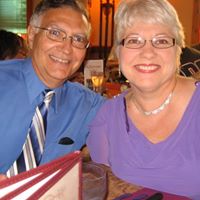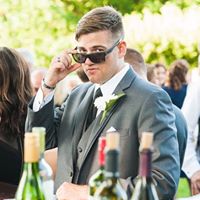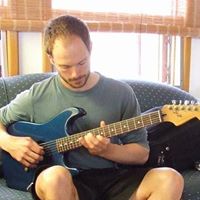David Joseph Saxton
age ~56
from Chicago, IL
- Also known as:
-
- David J Saxton
- David J Faxton
- Dave J Saxton
- David J Sexton
- Phone and address:
-
2835 N Lakewood Ave APT 3A, Chicago, IL 60657
2487564851
David Saxton Phones & Addresses
- 2835 N Lakewood Ave APT 3A, Chicago, IL 60657 • 2487564851
- 2512 Bosworth Ave, Chicago, IL 60614
- Sterling Heights, MI
- Los Angeles, CA
- 7184 Lanore St, Waterford Township, MI 48327 • 2487382638
- Waterford, MI
- Haslett, MI
- Berkley, MI
- Calabasas, CA
- 14128 Valusek Dr, Sterling Hts, MI 48312 • 8106250962
Work
-
Position:Food Preparation and Serving Related Occupations
Education
-
Degree:Graduate or professional degree
Us Patents
-
Wear Resistant Lead Free Alloy Bushing And Method Of Making
view source -
US Patent:20080166578, Jul 10, 2008
-
Filed:Jul 31, 2007
-
Appl. No.:11/830913
-
Inventors:David M. Saxton - Ann Arbor MI, US
James M. Carpenter - Willis MI, US
Gregory W. Sevenski - Farmington MI, US
Holger Schmitt - Hessen, DE
Gerd Andler - Hessen, DE -
Assignee:FEDERAL-MOGUL WORLD WIDE, INC. - Southfield MI
-
International Classification:B22F 3/12
B22F 3/24 -
US Classification:428546, 419 10, 419 23
-
Abstract:A bearing having improved wear resistance has a bearing material of a copper-tin-bismuth alloy which may also include phosphorus which has excellent strength, due to the solid solution of copper, tin and phosphorus (when used), attached to a steel backing shell. The material also has good lubricity as a result of the presence of the bismuth which also promotes tin mobilization and formation of a layer of tin on the bearing surface upon use of the bearing. The addition of small amounts of relatively small hard particles in the copper-tin-matrix, particularly FeP, MoSior a mixture thereof, provides a suitable hard surface artifact to improve the wear resistance of the bearing material. The bearing includes a sintered powder compact bearing material of a copper-tin-bismuth alloy powder and a metal compound powder which is bonded to a steel backing shell, wherein the metal compound powder has an average particle size of less than 10 μm.
-
Porous Sliding Bearing And Method Of Construction Thereof
view source -
US Patent:20090202855, Aug 13, 2009
-
Filed:Jan 8, 2009
-
Appl. No.:12/350364
-
Inventors:David M. Saxton - Ann Arbor MI, US
Eric Konieczny - Royal Oak MI, US
Robert Sturk - Plymouth MI, US -
International Classification:B32B 15/00
B22F 7/04
B22F 3/12
B32B 5/18 -
US Classification:428546, 419 8, 419 2, 428613
-
Abstract:A bearing material including a Cu—Sn—Bi alloy layer and method of construction thereof is provided. The alloy layer has a porosity ranging from about 2% to about 10%. A majority of the porosity has pores separate and out of direct communication with one another such that the pores are not interconnected with one another. The alloy layer can be sintered to a metal backing layer, and can be shaped as desired for an intended bearing application.
-
Wear Resistant Lead Free Alloy Sliding Element Method Of Making
view source -
US Patent:20120114971, May 10, 2012
-
Filed:Oct 6, 2011
-
Appl. No.:13/267406
-
Inventors:Gerd Andler - Konigsberstrasse, DE
Daniel Meister - Kostheim, DE
David Saxton - Ann Arbor MI, US
Ing Holger Schmitt - Pfungstadt, DE
James R. Toth - Ann Arbor MI, US -
International Classification:B32B 15/00
B23K 31/00
B32B 15/20
B32B 15/01
B32B 15/08 -
US Classification:428647, 428457, 428646, 428648, 428650, 228176
-
Abstract:A sliding element , such as a bushing or bearing, includes a sintered powder metal base deposited on a steel backing . The base includes a tin, bismuth, first hard particles , such as FeP and MoSi, and a balance of copper. In one embodiment, a tin overplate is applied to the base . A nickel barrier layer can be disposed between the base and the tin overplate , and a tin-nickel intermediate layer between the nickel bather layer and the tin overplate . In another embodiment, the sliding element includes either a sputter coating of aluminum or a polymer coating disposed directly on the base . The polymer coating includes second hard particles , such as FeO. The polymer coating together with the base provides exceptional wear resistance over time.
-
Bearing And Method Of Manufacturing Permitting High Temperature Heat Treatment
view source -
US Patent:20190293114, Sep 26, 2019
-
Filed:Mar 21, 2018
-
Appl. No.:15/927461
-
Inventors:- Southfield MI, US
David M. SAXTON - Ann Arbor MI, US -
International Classification:F16C 17/02
F16C 33/12
B23K 20/00
B23K 20/26 -
Abstract:A bearing including a backing formed of a steel material, a lining formed of aluminum or an aluminum alloy, and a diffusion barrier layer disposed between the backing and the lining is provided. The diffusion barrier layer is formed of nickel or a nickel alloy and has a thickness ranging from 1 micron to 100 microns. The bearing is typically formed by cladding the lining or plating the steel backing with the diffusion barrier layer, bonding the lining and the backing with the diffusion barrier layer between, heating to a temperature of at least 400 C., and forming the bearing into a shape after or before the heating step.
-
Highstrength Low Friction Engineered Material For Bearings And Other Applications
view source -
US Patent:20160258486, Sep 8, 2016
-
Filed:May 12, 2016
-
Appl. No.:15/153541
-
Inventors:- Southfield MI, US
David Saxton - Ann Arbor MI, US -
International Classification:F16C 33/14
F16C 33/24
C25D 7/00
C25D 3/38
C25D 5/10
F16C 33/12
C25D 3/30 -
Abstract:A high strength, low friction engineered material includes a low friction material filling interstices of a metal microlattice. The metal typically comprises 5 volume % to 25 volume % and the interstices typically comprise 75 volume % to 95 volume %, based on the total volume of the metal microlattice and the interstices. The low friction material preferably fills 100 volume % of the interstices. The metal microlattice can be formed of a single layer, or multiple layers, for example layers of nickel, copper, and tin. The low friction material is typically a polymer, such as polytetrafluoroethylene (PTFE), polyamide (PAI), polyetheretherketone (PEEK), polyethylene (PE), or polyoxymethylene (POM). The low friction material can also include additive particles to modify the material properties. The engineered material can be used in various automotive applications, for example as a bearing, or non-automotive applications.
-
Copper Alloy, Use Of A Copper Alloy, Bearing Having A Copper Alloy, And Method For Producing A Bearing Composed Of A Copper Alloy
view source -
US Patent:20160102386, Apr 14, 2016
-
Filed:May 8, 2014
-
Appl. No.:14/890002
-
Inventors:- Wiesbaden, DE
DANIEL MEISTER - MAINZ-KOSTHEIM, DE
DAVID M. SAXTON - ANN ARBOR MI, US -
International Classification:C22C 9/06
F16C 33/12
B22F 7/00 -
Abstract:The invention relates to a copper alloy such as, for example, CuNi6Sn5Fe2P0.15, which has hard particles such as, for example, Fe3P or Fe2P and optionally solid lubricants such as, for example, hexagonal boron nitrides or graphite. The invention further relates to the use of said copper alloy for a bearing and to a bearing having said copper alloy. The invention further relates to a method for producing a bearing having a copper alloy, wherein a metal powder is produced, for example, by means of melt atomization, hard particles and optional solid lubricants are optionally added to said powder, and the powder is sintered onto a substrate. Finally, the invention relates to an alternative method for producing a bearing, wherein the copper alloy is applied to a substrate by means of casting or plating or wherein the bearing is made completely of the copper alloy.
-
Bi-Material Strip And A Method Of Bonding Strips Of Different Materials Together
view source -
US Patent:20150321451, Nov 12, 2015
-
Filed:Jul 22, 2015
-
Appl. No.:14/805892
-
Inventors:- SOUTHFIELD MI, US
DAVID MICHAEL SAXTON - ANN ARBOR MI, US -
International Classification:B32B 15/01
B32B 3/26
B32B 7/04 -
Abstract:A continuous hot bonding method for producing a bi-material strip with a strong bond therebetween is provided. The method comprises sanding a first strip formed of steel; and applying a layer of first particles, typically formed of copper, to the sanded first strip. The method next includes heating the first strip and the layer of the first particles, followed by pressing a second strip formed of an aluminum alloy onto the heated layer of the first particles. The aluminum alloy of the second strip includes tin particles, and the heat causes the second particles to liquefy and dissolve into the melted first particles. The first particles and the second particles bond together to form bond enhancing metal particles, which typically comprise bronze.
-
Method For Producing A Sliding Bearing Comprising A Cuni2Si, Cufe2P Or Cusnx Compound
view source -
US Patent:20140363570, Dec 11, 2014
-
Filed:Nov 29, 2012
-
Appl. No.:14/363477
-
Inventors:- Wiesbaden, DE
Daniel Meister - Mainz-Kostheim, DE
David M. Saxton - Ann Arbor MI, US -
Assignee:Federal-Mogul Wiesbaden GmbH - Wiesbaden
-
International Classification:F16C 33/02
B05D 5/08
B05D 1/36 -
US Classification:427203
-
Abstract:A sliding bearing includes a bearing surface which comprises a material in which an alloy material based on CuSnX (0.01
Name / Title
Company / Classification
Phones & Addresses
President
N.A.R., Inc
Resumes

Principal Chief Executive Officer
view sourceLocation:
340 Madison Ave, New York, NY 10016
Industry:
Wireless
Work:
Cellular Lease Consultants
Principal Chief Executive Officer
Bank of the Internet
Business Development Manager
Unison Site Management Sep 2003 - Sep 2016
Vice President Sales and Site Development and Finance
Principal Chief Executive Officer
Bank of the Internet
Business Development Manager
Unison Site Management Sep 2003 - Sep 2016
Vice President Sales and Site Development and Finance
Education:
Central Michigan University 1989 - 1991
Skills:
Contract Negotiation
Cellular Communications
Account Management
Customer Service
Team Building
Site Acquisition
Sales Management
Start Ups
Business Development
Management
Sales
Wireless
Negotiation
Strategic Planning
New Business Development
Telecommunications
Cellular Communications
Account Management
Customer Service
Team Building
Site Acquisition
Sales Management
Start Ups
Business Development
Management
Sales
Wireless
Negotiation
Strategic Planning
New Business Development
Telecommunications

David Saxton
view source
David Saxton
view source
David Saxton
view source
David Saxton
view source
David Saxton
view source
Resident Student
view sourceWork:
Usa Cgsc
Resident Student
Resident Student

David Saxton
view sourceMedicine Doctors

David L. Saxton
view sourceSpecialties:
Orthopaedic Surgery
Work:
Mcbride Orthopedic Hospital Clinic
400 N Bryant Ave, Edmond, OK 73034
4052309200 (phone), 4053305591 (fax)
Mcbride Orthopedic Hospital Clinic
1110 N Lee Ave, Oklahoma City, OK 73103
4052309270 (phone), 4052309467 (fax)
400 N Bryant Ave, Edmond, OK 73034
4052309200 (phone), 4053305591 (fax)
Mcbride Orthopedic Hospital Clinic
1110 N Lee Ave, Oklahoma City, OK 73103
4052309270 (phone), 4052309467 (fax)
Education:
Medical School
University of Oklahoma College of Medicine at Oklahoma City
Graduated: 2001
University of Oklahoma College of Medicine at Oklahoma City
Graduated: 2001
Procedures:
Arthrocentesis
Joint Arthroscopy
Knee Arthroscopy
Knee Replacement
Carpal Tunnel Decompression
Hip/Femur Fractures and Dislocations
Lower Arm/Elbow/Wrist Fractures and Dislocations
Lower Leg/Ankle Fractures and Dislocations
Shoulder Arthroscopy
Shoulder Surgery
Joint Arthroscopy
Knee Arthroscopy
Knee Replacement
Carpal Tunnel Decompression
Hip/Femur Fractures and Dislocations
Lower Arm/Elbow/Wrist Fractures and Dislocations
Lower Leg/Ankle Fractures and Dislocations
Shoulder Arthroscopy
Shoulder Surgery
Conditions:
Lateral Epicondylitis
Osteoarthritis
Plantar Fascitis
Rotator Cuff Syndrome and Allied Disorders
Fractures, Dislocations, Derangement, and Sprains
Osteoarthritis
Plantar Fascitis
Rotator Cuff Syndrome and Allied Disorders
Fractures, Dislocations, Derangement, and Sprains
Languages:
English
Description:
Dr. Saxton graduated from the University of Oklahoma College of Medicine at Oklahoma City in 2001. He works in Oklahoma City, OK and 1 other location and specializes in Orthopaedic Surgery. Dr. Saxton is affiliated with Mc Bride Orthopedic Hospital.
Classmates

David Saxton
view sourceSchools:
Pleasant Valley High School Chico CA 1975-1979
Community:
Karrie Lange, Theresa Fegley, Terry Thompson, Angela Quinn

David Saxton (Hess)
view sourceSchools:
Holy Name Seminary Madison WI 1963-1967

David Saxton
view sourceSchools:
Wyoming Vally West High School Kingston PA 1966-1970
Community:
Deb Debonis, Jack Musto, Lois Arnold, Eugene Zukosky

David Saxton
view sourceSchools:
St. Charles Borromeo School Detroit MI 1955-1959
Community:
Terry Tocco, Debra Bouchie, Greg Smithers, Denise Walton, Joseph D'herde

Yazoo City Junior High Sc...
view sourceGraduates:
David Saxton (1972-1976),
el Fe (1984-1988),
William Smith (1993-1997),
Bobby Bennett (1992-1996),
Cassandra Fowler (1990-1994),
Marion Johnson (2004-2008)
el Fe (1984-1988),
William Smith (1993-1997),
Bobby Bennett (1992-1996),
Cassandra Fowler (1990-1994),
Marion Johnson (2004-2008)

Harding High School, Ft. ...
view sourceGraduates:
Tennylle Kelso (1995-1999),
David Saxton (1976-1980),
Keith Johnston (1981-1985),
Warren Vanhorn (1994-1998),
Sharon Hunter (1973-1977)
David Saxton (1976-1980),
Keith Johnston (1981-1985),
Warren Vanhorn (1994-1998),
Sharon Hunter (1973-1977)

St. Charles Borromeo Scho...
view sourceGraduates:
David Saxton (1955-1959),
Leonard Rusin (1961-1965),
Margaret Wieske (1947-1951),
William Saad (1947-1951),
Glen Donahue (1949-1953),
Patricia Mc Nabb (1946-1950)
Leonard Rusin (1961-1965),
Margaret Wieske (1947-1951),
William Saad (1947-1951),
Glen Donahue (1949-1953),
Patricia Mc Nabb (1946-1950)

George C. Wallace State C...
view sourceGraduates:
David Saxton (1976-1978),
Jill Obar (1980-1981),
Bradley Whitehead (1999-2001),
Adrienne Darnell (2001-2003),
Charles Eatmon Jr (1984-1984)
Jill Obar (1980-1981),
Bradley Whitehead (1999-2001),
Adrienne Darnell (2001-2003),
Charles Eatmon Jr (1984-1984)
Youtube
Plaxo

David Saxton
view sourceSan Francisco, CA

David Saxton
view source
David Saxton
view source
David Saxton
view source
David Saxton
view source
David Paul Saxton
view source
David Saxton
view source
David Paul Saxton
view source
David Robert Saxton
view sourceMyspace
Googleplus

David Saxton
Lived:
San Francisco, CA
Oakland, CA
Santa Monica, CA
Oakland, CA
Santa Monica, CA
Work:
Yola.com - Vice President of Business Development
Snapfish
Hewlett-Packard
Ebates
Real Media
California Wine Marketing
Snapfish
Hewlett-Packard
Ebates
Real Media
California Wine Marketing
Education:
U.C. Berkeley, The College Preparatory School, The Athenian School
About:
Creative media business development professional

David Saxton

David Saxton

David Saxton

David Saxton

David Saxton

David Saxton

David Saxton
Get Report for David Joseph Saxton from Chicago, IL, age ~56










